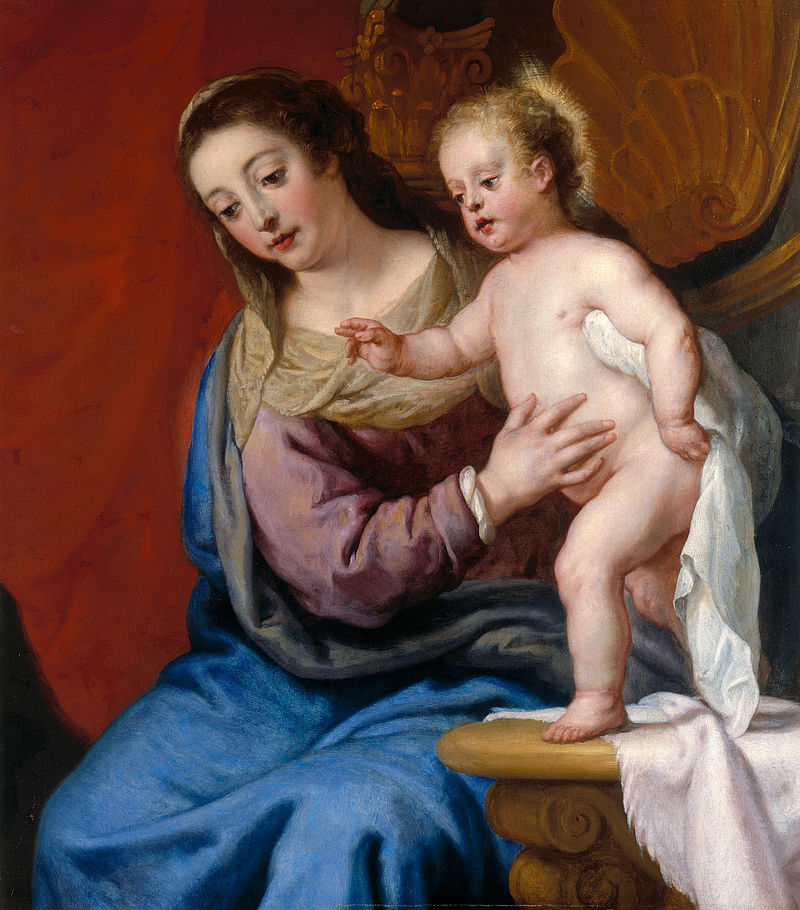Virgin and Child
Caspar de Crayer (1584 - 1669)
Framesize 130.00 x 120.00 x 8.00 cm
Picture size 48.50 x 106.50 cm
Crayer drew inspiration from Schelte Bolswert’s engraving of Rubens’ lost painting "PVTEVS AQVARVM VIVENTIVM. Fonteyn der houen" (Virgin and Child by a fountain). Mary was originally shown full-length. A caryatid (a female figure supporting an entablature) supported the arm of the chair, from which a patterned carpet extended into the room. A red curtain surrounded the richly decorated chair, below which Crayer defined the background by means of an architectural element, the edge of a wooden
piece of furniture and a wicker basket. He had combined the typical motif, popular in the Middle Ages, of the victoriously enthroned Queen of Heaven, with that of the baroque, maternal Mary. Subsequent trimming of the canvas reduced this combination of the diverse notions to that of the loving mother-child relationship. This reduction necessitated later overpainting, so the head of the caryatid was replaced by a second spiral.
Ducke Astrid: Gaspard (Caspar) de Crayer, Virgin and Child, in: Ducke Astrid, Habersatter Thomas (Hrsg./Edi.): von | from 0 auf | to 100. Residenzgalerie Salzburg 1923-2023. Salzburg 2023, S./p. 290-293


